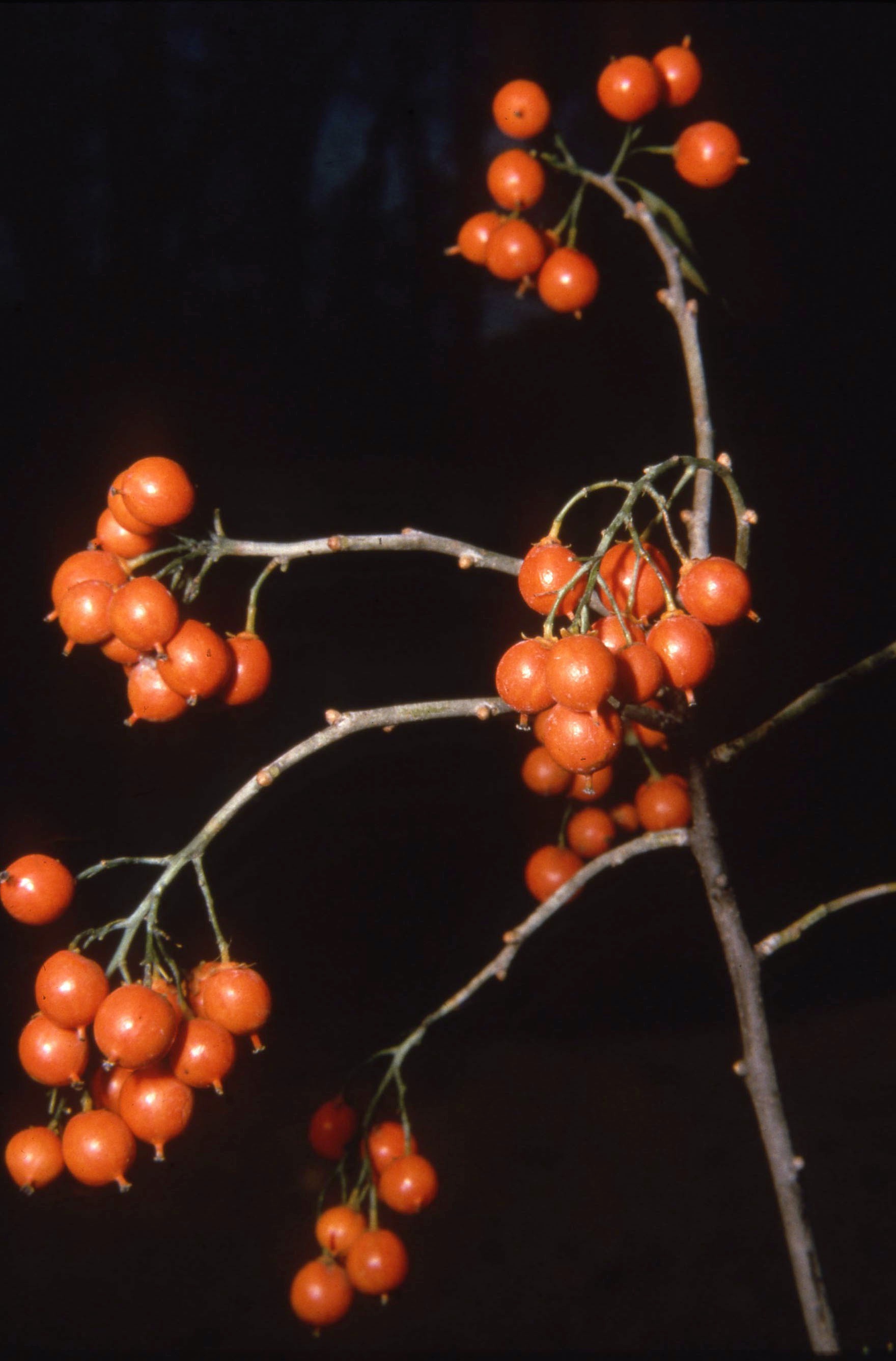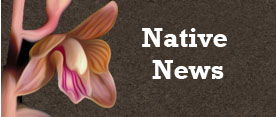NC Native Plant Society:
Plant Details
Celastrus scandens
American Bittersweet
Scientific Name: |
Celastrus scandens |
|---|---|
Genus: |
Celastrus |
Species Epithet: |
scandens |
Common Name: |
American Bittersweet |
Plant Type |
Woody Vine |
Life Cycle |
Perennial |
Plant Family |
Celastraceae (Bittersweet Family) |
Native/Alien: |
NC Native |
Invasive Status: |
(*Key) |
Size: |
12-36 ft. |
Bloom Color(s): |
White, Green |
Light: |
Sun - 6 or more hours of sun per day, Part Shade - 2 to 6 hours of sun per day |
Soil Moisture: |
Moist |
Bloom Time: |
May, June |
Growing Area: |
Mountains, Piedmont |
Habitat Description: |
Mesic forests. |
Leaf Arrangement: |
Alternate |
Leaf Retention: |
Deciduous |
Leaf Type: |
Leaves veined, not needle-like or scale-like |
Leaf Form: |
Simple |
Life Cycle: |
Perennial |
Wildlife Value: |
Has some wildlife value |
Landscape Value: |
Suitable for home landscapes |
State Rank: |
S?: Uncertain (*Key) |
Global Rank: |
G5 - Secure (*Key) |
State Status: |
E: Endangered (*Key) |
Notes: |
Vascular Plants of NC: "Appears to be in decline, likely being impacted by competition with, or hybridization with, the noxious invasive C. orbiculatus. This is a State Endangered species. (Do not be fooled into thinking that this is not a scarce plant in the state, as it has been recorded from about 25 counties; many of these are old records, and most of them contain only a very small population or two.)" |
|
Ripe fruit Washington County, RI
Irene H. Stuckey |
|
Links: |
https://auth1.dpr.ncparks.gov/flora/plant_list.php https://gobotany.nativeplanttrust.org/species/celastrus/scandens/ https://plants.ces.ncsu.edu/plants/celastrus-scandens/ |
back to top
go to plant details search
go to plant images search
go to gallery home
back to Initial c Gallery
back to orchids
back to Carnivorous Plants
back to Trilliums




